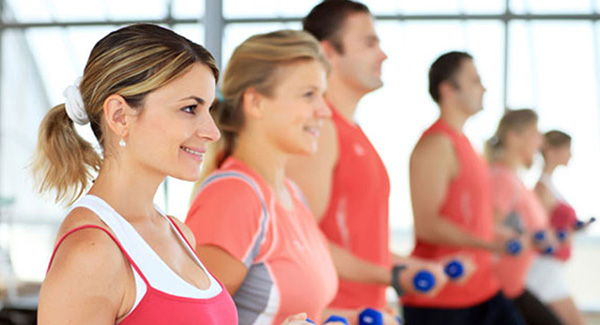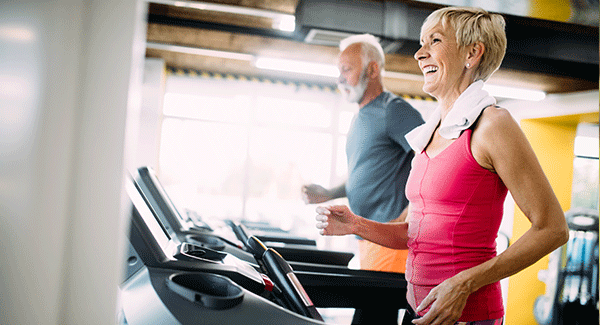How to Choose Home Exercise Equipment
Get tips for buying fitness gear with the right features to provide safer, more effective home workouts for people with arthritis.
Not all exercise equipment is created equal. In fact, “Features can vary widely from one model to the next – even when they’re made by the same manufacturer,” says Gregory Florez, a spokesperson for the American Council on Exercise (ACE) and certified trainer based in Salt Lake City, Utah. No surprise, then, that some home fitness equipment is better suited for individuals with arthritis than others. To safeguard your joints and make your next workout more effective, use these simple guidelines when shopping for exercise machines, free weights and more.
Exercise Equipment
Elliptical Trainer
- A control panel that allows you to adjust incline and resistance (some models only have the former). “If you have arthritis in your lower extremities, especially your knees, you need the ability to keep the resistance low to take pressure off your joints,” says Marc Rabinoff, a professor in the Human Performance and Sport Department at Metropolitan State College of Denver.
- More than one hand placement – ideally, a set of moving and a set of stationary handles – so you can adjust for both comfort and balance, says Rabinoff.
- Wide foot placement pads. “They make it easier to adjust to a stance that’s best for your balance and neutral on your joints,” says Carole B. Lewis, PhD, a physical therapist with Professional SportCare and Rehab in the Washington D.C. area and an adjunct professor in the department of geriatrics at George Washington University. When you’re standing upright and not in motion, your knees should be in line with your hips – not above or in front of your feet. “If you can’t see your shoes, the foot panels on the machine are positioned incorrectly for your frame; choose another machine,” advises Lewis.
Stay safe by:
- Skipping pre-set programs. “They can change speed or incline too fast or unexpectedly, which increases the risk of muscle and joint strain, as well as falling. Instead, adjust your settings manually,” says Rabinoff.
Stationary Bike
- A recumbent bike. Yes, you can use an upright bike if you have arthritis – but a recumbent bike makes it easier to maintain a proper posture, which results in less pressure on the spine and hip joints, says Lewis.
- A wide, cushioned seat. “With a too-small seat, there’s an uneven distribution of weight on hip joints and sit bones, which can contribute to joint pain and irritation. Plus, they make it more difficult to balance,” says Rabinoff.
- Variable controls so you can adjust your speed manually.
Stay safe by:
- Skipping straps on foot pedals. “They encourage the use of the wrong leg muscles, and if you lose balance, you can’t put your foot on the ground fast enough to prevent a fall and twisted joints,” says Lewis.
- Adjusting your seat to the right height. (Ask a physical therapist or trainer to help you the first time.) “When you extend your leg forward, there should still be a slight bend in your knee,” says Lewis.
Rowing Machine
- A bar attachment, rather than individual cables. “A bar is easier to hold, especially if you have arthritis in your hands or wrists,” says Rabinoff.
- A machine that uses air or a fluid-filled chamber to create resistance. “Machines that used stacked weights make rowing motions less smooth and tend to be less forgiving on the joints,” says Florez.
Stay safe by:
- Starting with the lowest resistance possible. This helps you avoid accidentally over-straining your muscles and joints.
- Engaging your core through the entire range of motion. “You can use a rowing machine if you have arthritis in your spine, shoulders or hips – if you engage your core muscles to prevent wear and tear on small joints,” says Florez. Sit with an upright posture and a neutral spine, and keep your stomach and back muscles pulled in as you move.
Resistance Bands
- Bands with handles. Tube-like bands with handles on the ends are easier to grip and position than flat bands that don’t have handles, says Florez.
- Sets of bands with different resistance levels. Many are color-coded according to their resistance. “You want to start with the lowest resistance and work your way up,” says Florez. Not sure if you’re using the right level? “You should be able to do about 15 repetitions; the last few should feel difficult, but not painful,” notes Florez.
Stay safe by:
- Checking bands. Running your finger up and down the band before you use it to check for cracks or rips that could cause it to tear apart during your workout.
- Using a stationary object. Make sure your band is securely positioned to a stationary object; your foot, the door, a pole, etc.
- Not relying solely on bands for your resistance workout. “You don’t get resistance all the way through the range of motion, which is why I tell patients to use hand weights or weight machines at least once a week,” says Lewis.
Free Weights
- Handles with rubberized grip. They are slip-resistant, easier to hold and ultimately kinder on hand, finger and wrist joints, say Lewis and Florez, who add that cuff weights, which can be strapped around wrists and ankles, are a good alternative if you have severe hand arthritis and find it difficult to grip a free weight.
- Non-adjustable weights. Weight-adjustable dumbbell sets are convenient, but they require a lot of fine motor movement, which can be difficult for those with finger, hand or wrist arthritis. Plus, “many people end up dropping the weights and injuring their feet,” says Dianne Doyle, a physical therapist at Heartland Orthopedic Specialists in Alexandria, Minnesota, who regularly works with patients who have osteoarthritis and rheumatoid arthritis.
Stay safe by:
- Skipping weights without handles or attachments. Kettle bells, discs and other weights that don’t have a handle or can’t be attached around the wrists or ankles can be, “hard for most people to grip, and it can be especially difficult to maintain proper form while using them, which increases the risk of injury,” says Lewis.
Exercise Ball
- A high-quality ball made of thick rubber or plastic. “If you’re purchasing one for your home, make sure it’s manufactured by a reputable fitness company,” says Florez. “Cheap balls have been known to pop while people are using them, which can lead to serious injury.”
- The right size ball. As a guideline, people between 5 feet and 5 feet 6 inches should choose a 55 cm ball; those between 5 feet 7 inches and 6 feet 1 inch should choose a 65 cm ball; and those 6 feet 2 inches and taller, should choose a 75 cm ball. When you sit on the ball, your hips should be slightly higher than your knees, says Lewis.
- Seeking help from a physical therapist or trainer. Get help the first several times you use an exercise ball. “Even sitting on an exercise ball requires a great deal of balance, as well as full mobility in your knees,” says Doyle.

Stay in the Know. Live in the Yes.
Get involved with the arthritis community. Tell us a little about yourself and, based on your interests, you’ll receive emails packed with the latest information and resources to live your best life and connect with others.


